
 |
Evidence of World War II in Ludhamby Margaret Watts
|
Evidence around the village of World War 2
During World War 2, the village of Ludham was used as an airfield for the RAF and as an army camp.
The Home Guard operated to protect the village, and an Invasion Committee was set up in case there was an invasion.The Airfield
To the north east of the village lies a flat piece of land, which made it a suitable area for an airfield.
Today, the old Control Tower can still be seen

Some of the original huts and workshops are still there..

One of the old runways has been renovated and is used by those who still fly their planes from Ludham airfield.
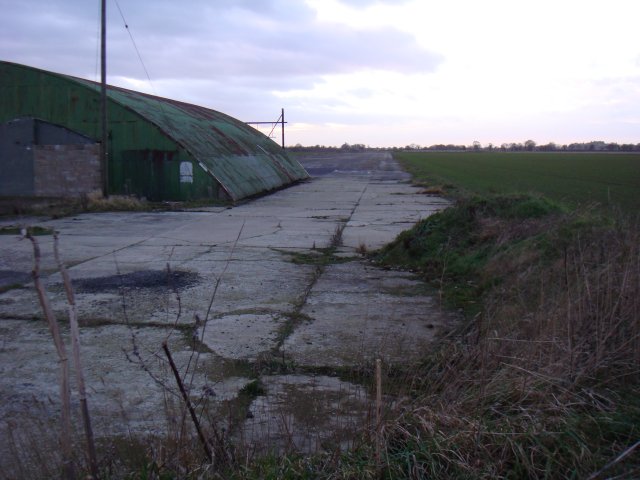
The old perimeter road is still used as a track by farmers to get to their field.
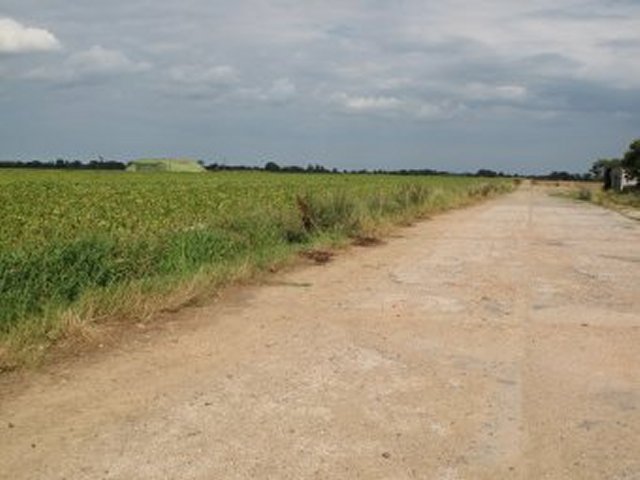
The very large wall on the east of the site was used for Spitfire firing practice and gun testing. The airplanes were jacked up at the rear and they fired their guns at targets marked on the wall. Please note that the wall was demolished in 2012 so there is no point in looking for it if you come on a visit.
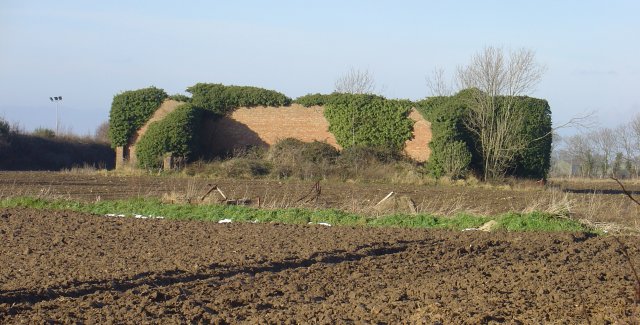
The Army Camp
The army had buildings around the village.
These have almost all gone now, but a lorry shed in the grounds of The Manor is still there.

Home Guard
The map made and used by the Home Guard is in the Norfolk Record Office, and can be seen there. It was drawn on the back of an Ordinance Survey map. Its identification number is (MC 1759/2). The pictures of the map are the property of the Norfolk Record Office and are not to be used for any purpose without their permission. The Ludham Archive Group thanks the Record Office for permission to show this document on this site.
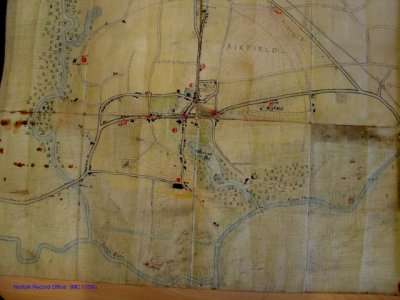 |
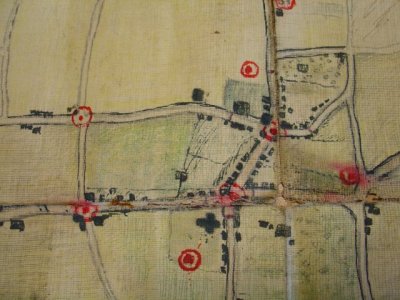 |
This brick building in the paddock of Heronway, on Norwich Road, was the ammunition store for the Home Guard during the war.It is a standard building officially called an explosives and inflammables store. (Sometimes, for some reason nicknamed an 'elephant hut').
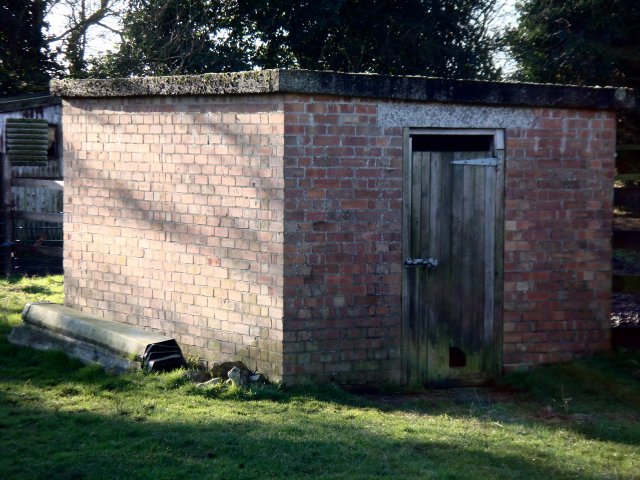
We believe that tank traps were made around the village centre. Where they were can be seen on the Home Guard map.
We think that these filled in bases were once where one of those tank traps was located.
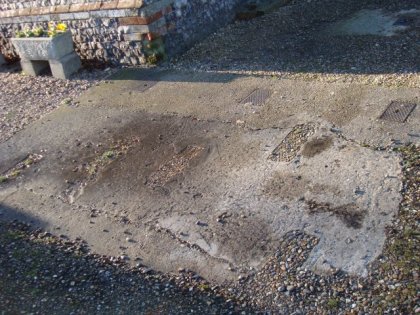 |
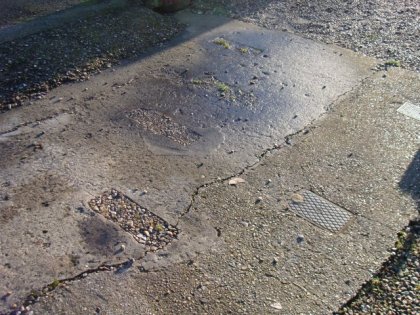 |
The old Drainage Mill to the north of Ludham Bridge was strengthened and used as a two story pill box. The River Ant was used as a natural inland 'stop line' (too deep for tanks to ford). They even widened and deepened the North Walsham-Dilham canal further up, to keep it, in theory, tank-proof. This meant enemy vehicles would have to use the bridges. So each crossing of the Ant (and the Bure, by the way) was heavily defended.
A concrete base with a stainless pin outside the mill is the base for a Spigot Mortar, a well-regarded weapon that was produced in large numbers. There's another base on the opposite bank. In addition there were two 'flame fougasses' to the west of the bridge, which would have swamped the road with burning petrol if required! The bridge would almost certainly have been mined as well.

There is
another spigot mortar on the other side of the river.
In the next 3 photographs, we see the Horning Home Guard working on the defences at Ludham Bridge. Thank you to Mary Lejeune for letting us use these pictures.
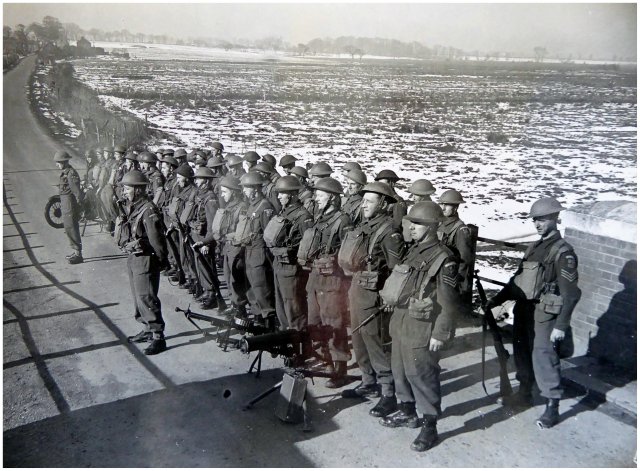
Here we see the Horning Home Guard on parade on a snowy day just on the Horning side of Ludham Bridge.
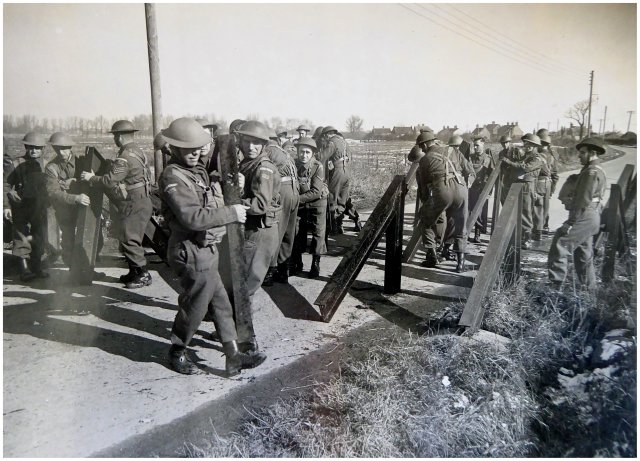
Here a tank trap is being set up
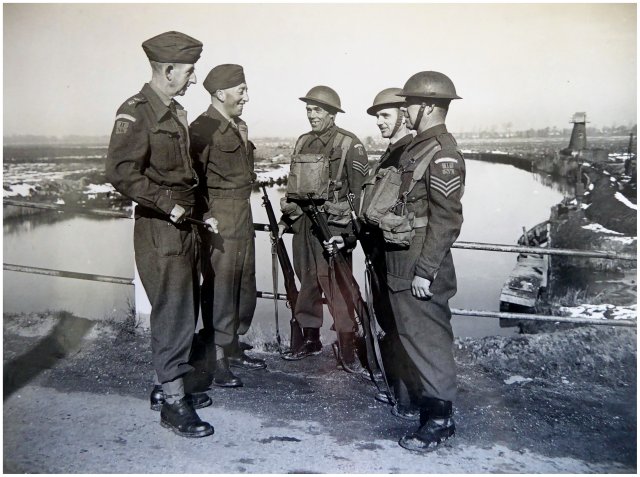
Standing on Ludham Bridge looking upstream.
The man second on the left is Stanley Tallowin known as “Brother” Tallowin from Horning. The man second on the right is Stanley Cole who lived at Horning Post Office where he was Post Master as well as working for Boulton and Paul’s in Norwich.
The following names are written on the reverse of one of the photographs - G.Chapman, P. J. Coe, J. Cutting, E. J. Edwards, E. Fuller, E. E. Gilden, C. F. Gowing, J. W. Hindle, F. Jordan, A. Leall, C de M Leathes, C. M. Moore, J. Rivett, H. Southgate, C. Woodcock, E. Woods, J. Yallop.
Pill Boxes
Is this pillbox in Ludham or Catfield?
Right up on the northern boundary, this pillbox has almost disappeared under its greenery.
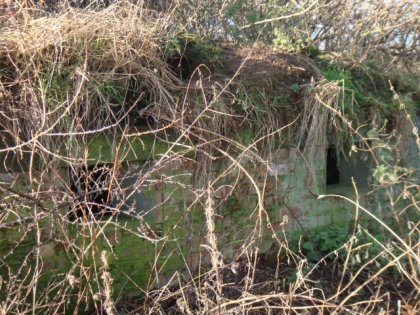 |
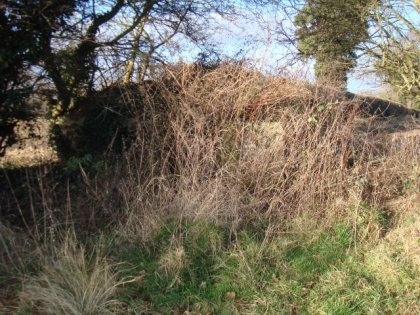 |
This one to the west of the sewage works on Catfield Road is more clearly visible. It is of a rare design.
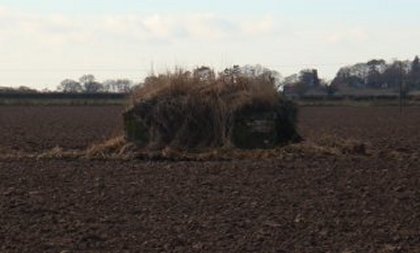 |
 |
One at the corner of Staithe Road andHall Common Road is still there.
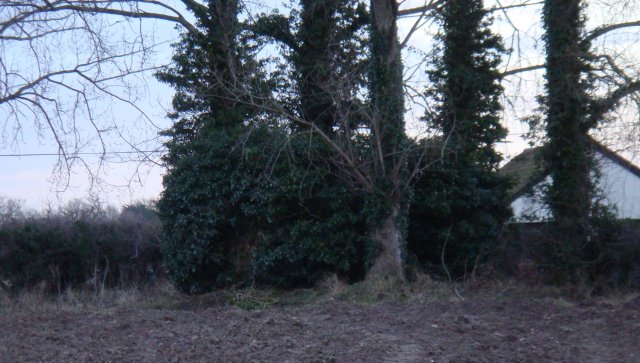
A third one, unusual in its square shape, is at Fritton. This design is unique (though a fairly similar one is at RAF Coltishall). The Air Ministry had their own separate pillbox designs, although some were built in only very small numbers
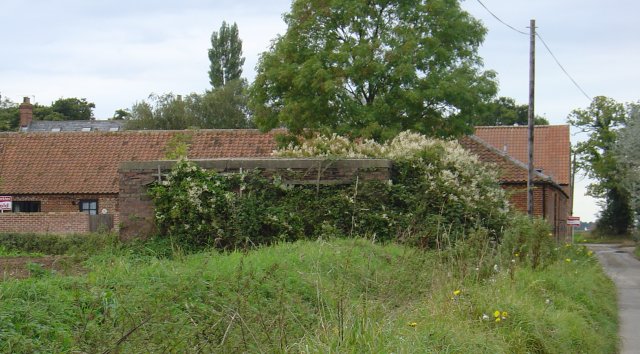
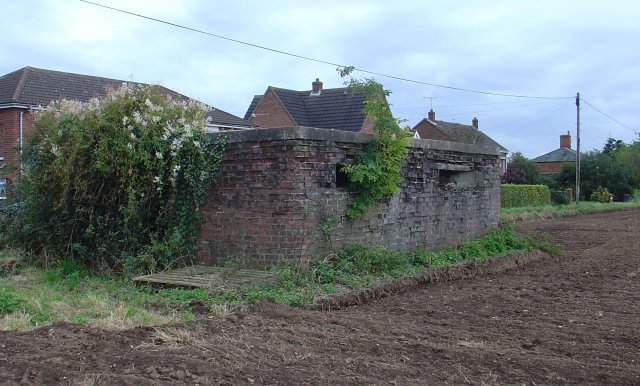
These extracts from the minutes of the Parish Council show how the villagers of Ludham played their part in the War effort.
|
July 30 1941 Present Wright Kitchener England Riches Thompson on invitation Adcock, J. Dale W. Barber, Miss N. Hacon Mrs. J. EvansThe purpose of the meeting was to discuss a circular letter from the RDC with regard to the collection and disposal of Salvage Iron, Rags, Bones and Paper. It was understood that Mr. C. A. Thrower would take charge of the iron. The W.V.S. for scrap paper, it was agreed to ask the W.V.S. to be responsible also for Rags. Mr. W. K. England agreed to accept the Bones and be responsible for their disposal. Mrs. Evans explained that the same dump at the Vicarage could be used for scrap metals. It was agreed that the clerk be instructed to write to all farmers asking them to collect all useful materials and if possible to convey same to the Dump at the Vicarage. Also to put up Public Notices for the Public’s attention to this urgent matter. Mr. Adcock reported that the Parish had been divided into Four sections for Fire Watching and that the scheme was already in operation. Also that Mr. Boardman had offered to supply the Bamboo Canes for Fire Fighting, which was considered very useful for the purpose. The Chairman with the co-operation of Mr. England offered to supply sand this to be put in convenient places in case of need. The Chairman reported that the matter of the Trailer Pump was still under consideration. Allotments The clerk reported that all allotment rents were paid up to date. He also drew attention to the fact that some of the holders had joined the Forces and their allotments were being worked by other allotment holders; this was appreciated so long as it was understood there was no sub letting. |
June 25th 1941 A Meeting of the Council and Heads of Local Defence Services was held in the Council School on Wednesday June 25th at 7 p.m. Mr. W. Wright occupied the chair. Present Miss N. Hacon (First Aid) W. Barber (Fire Fighters) G. H. Kitchener (Home Guard) W. K. England (Food Officer) C. Thrower (ARP)Acting Sergeant Edmunds for Police, others G. Hayhurst and A. W. Riches The business of the meeting was to discuss a circular letter from the County ARP Controller with the view to setting up a Parish Invasion Committee. After the reading of the letter, the Chairman explained at considerable length what was required, stressing the need of avoiding Panic and the co-ordinating of the various defence services to prevent overlapping. The discussion which followed revealed that the various services were under strength to meet such an emergency as an invasion. After a very full discussion it was decided that (1) the present Heads of Defence Services would constitute the Invasions Committee (2) That every household in the Parish be given a circular letter setting out a list of the various services for which volunteers were required, and stressing what is required of the Parish and the urgent need for strengthening of the present Defence Services. Mr. C. Thrower undertook to get the letter out and to collect same and that another meeting be called as soon as the results are known. It was decided to ask Mr. N. Adcock to be in charge of the Fire Watchers. |
The War Memorial commemorates the dead from the village in two World Wars.
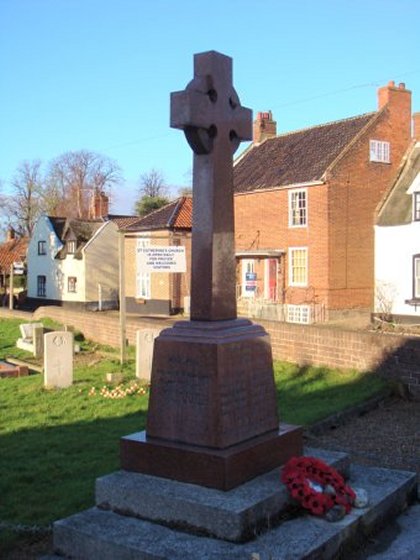 |
 |
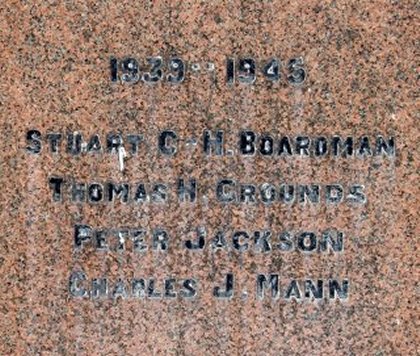 |
Copies of these names can also be found in St. Catherine’s Church and in the Methodist Chuch.
 |
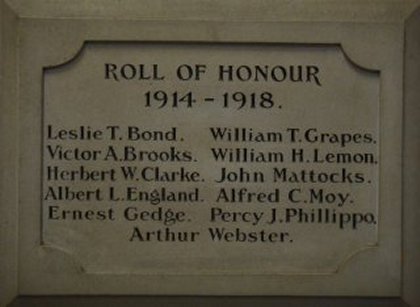 |
Graves of Servicemen can be found in the churchyard
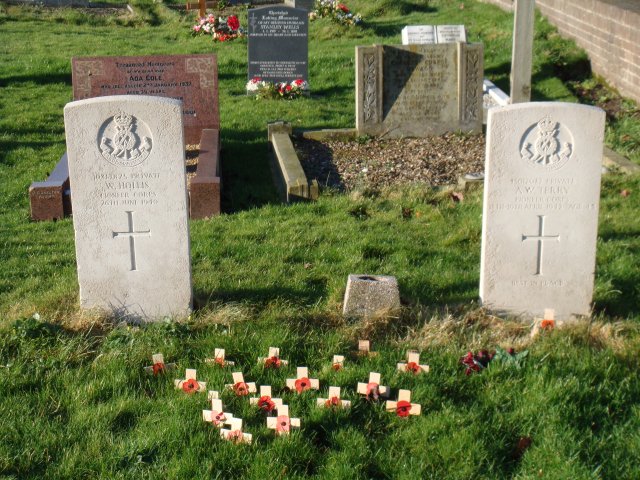
Mrs. Powell was killed by a bullet from a German aircraft attacking the village. She was having lunch with her family at the Powells Shop in Stocks Hill. The bullet came through the window and ricocheted off the dining table into her chest.
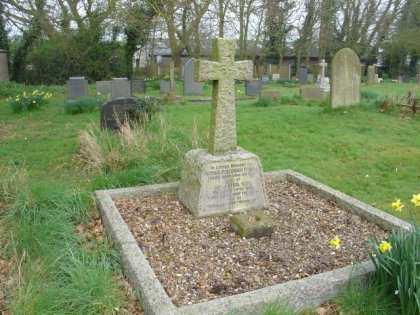 |
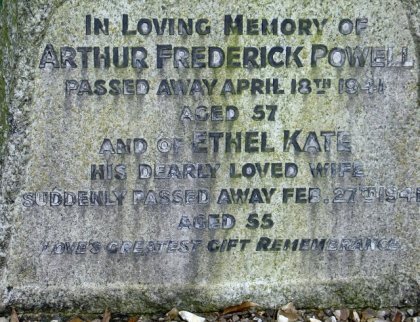 |
